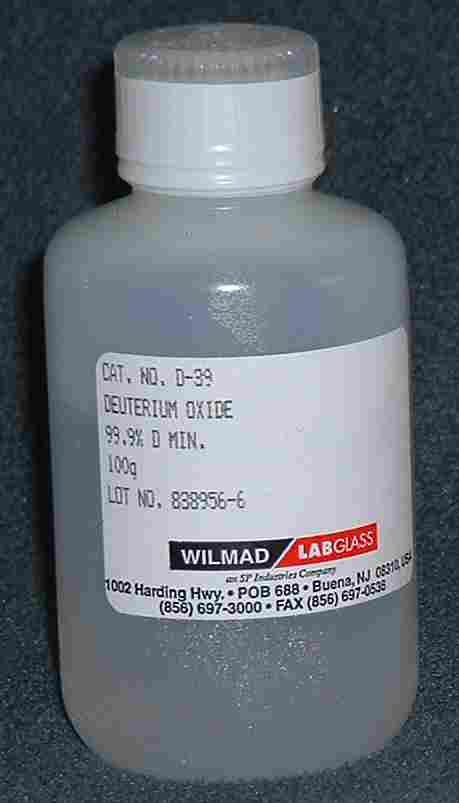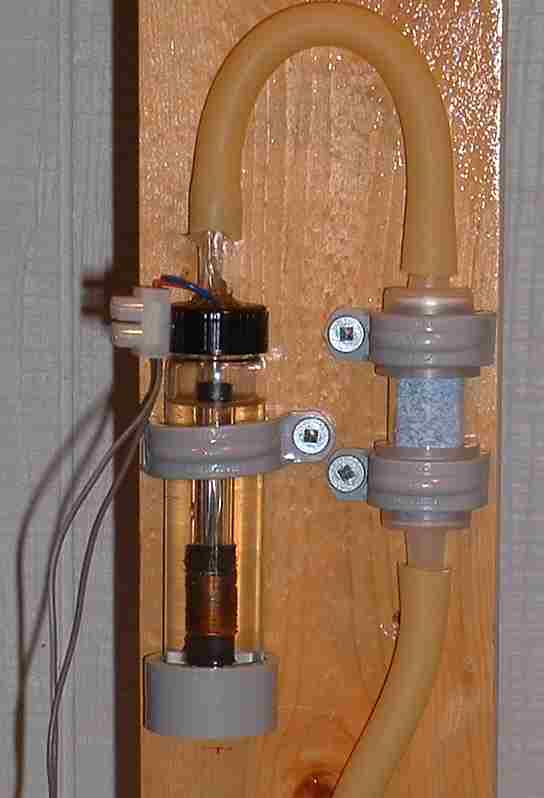An alternative, though, is to obtain Heavy Water (Deuterium Oxide, or D2O) and then use electrolysis to release the deuterium as a gas. This is the route which we chose to follow.
Fortunately, small quantities of heavy water are not controlled, and we were able to obtain 200 cc of 99.9% pure Deuterium Oxide from Wilmad Labglass. We really didn't need that much, but once again we were faced with a minimum order for international customers.
-See below:

We did not actually need that much, but the manufacturer's minimum order for out-of-country purchase meant that we had to buy the two.
(By the way, did you know that if you make an ice cube of heavy water, and place it in a container of tap water, the ice cube will sink?)
Extending through the black cap into the glass bottle is a glass tube with one electrode inside the tube, and one outside.
The bottle is filled about 3/4 full with a solution of sodium bicarbonate and 99.9% pure Heavy Water. The solution was created by first making a saturated solution of sodium bicarbonate in heavy water, and then diluting it 50:50 with pure heavy water.
Using the terminals mounted on the cap, 12 volts D.C. is applied to the two electrodes, with the inner electrode negative. Deuterium (plus heavy water vapor) bubbles up the glass tube and is directed through a rubber tube to a vial of Drierite to remove as much of the water vapour as possible.
Not shown in the photo, It then passes through a needle valve, a long length of .005 in. ID capillary tubing and finally a shutoff valve before entering the bell jar.

The rate of deuterium production is automatically controlled. If more deuterium is being produced than is being used in the fusor, the pressure in the tube increases slightly, pushing the electrolyte down the tube, thus decreasing the area of contact between the electrode and the electrolyte and slowing the rate of deuterium production.
Even if no deuterium is being used at all, it is not necessary to remove power. The deuterium pushes the electrolyte inside the tube down until there is no contact with the electrode, and deuterium production stops.